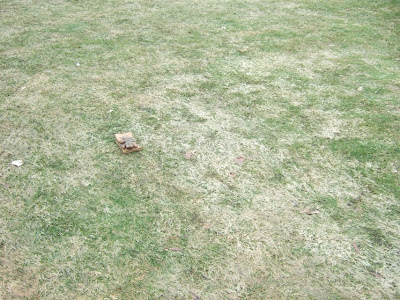This process has already started across parts of the Midwest and some of you may have noticed patches, or areas of brown in your lawn. It’s typical to receive a number of questions from your clients about the cause of these brown spots during spring green-up. There are a number of reasons why these patches can appear and this article will address some of the most common reasons and discuss what action, if any, is needed to remedy the situation.
Dormant warm-season grasses
Most lawns in the upper Midwest contain cool-season grasses like Kentucky bluegrass, perennial ryegrass, and tall and fine fescues. Occasionally lawns, or parts of the lawn, will contain warm-season grass species. Examples of these could include zoysiagrass, buffalograss, or nimblewill. Whereas cool-season grasses grow best in the spring and fall, warm-season grasses prefer the mid-summer months and will remain dormant (brown) longer into the spring until warmer temperatures arrive.
If zoysiagrass or buffalograss are the cause of your brown spot there isn’t much you can do other than exercise patience until warmer weather arrives. Nimblewill can be selectively controlled with Tenacity herbicide. Tenacity herbicide will be made available to homeowners later this spring. Consult a lawn care professional for more information about Tenacity herbicide.
 |
| Warm-season grasses such as buffalograss are still brown while cool-season grasses such a fine fescues begin to green-up. |
Leftover annual grassy weeds
Annual weeds such as crabgrass are always a concern and last year they seemed to be particularly troublesome. In lawns that had severe outbreaks, some of these annual grassy weeds may still be present. The good news is that you don’t have to worry about controlling leftover annual weeds. They have completed their lifecycle and are no longer alive. They did however drop seed and you may consider using a pre-emergence herbicide for the upcoming season.
 |
| Goosegrass, an annual grassy weed, is still present from the previous growing season. |
Snow molds
Damage from pink and gray snow mold is most evident shortly after the snow melts. The grass will usually appear off-color and be matted down. Chemical applications to control snow molds in the spring are seldom recommended as most of the damage has already taken place. You can help your lawn by raking up the matted areas of grass with a leaf rake. Chances are there is some live turf hiding underneath. The picture below shows an area of gray snow mold on the Iowa State University central campus.
 |
| Gray snow mold on the Iowa State University campus. |
Dog spots
Damage from animal urine will definitely create brown spots in the lawn. Where you can usually count on some recovery from snow mold damage, dog spots are very effective at killing grass. The best course of action is to remove the dead grass, break up the soil with a hand trowel or rake and re-seed the area. Note: Seed will not germinate and grow if a pre-emergence herbicide is to be used. The exception to this rule is when Tenacity or Siduron herbicides are used. Consult with a lawn care professional for more information about these products.
 |
| Man's best friend. Undoubtedly charming, but damaging to grasses. |
Salt damage
De-icing materials that contain sodium can be quite harmful to turf. Brown patches or areas of turf along driveways, sidewalks, or streets could be caused from salt damage. Depending on the severity of damage, reseeding may be necessary. Aerification and watering (or rainfall) can help flush salts through the soil profile and improve the conditions of the site.
Marcus Jones
Graduate Research Assistant
Nick Dunlap
Undergraduate Research Assistant






